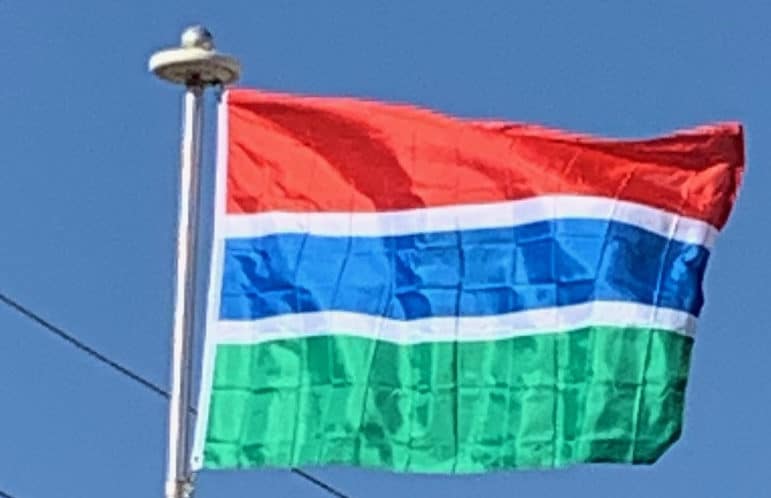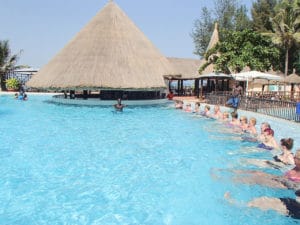
Previously, the United Kingdom and the EU constituted the major Gambian export markets. However, in recent years Senegal, the United States, and Japan have become significant trade partners of the Gambia. In Africa, Senegal represented the biggest trade partner of the Gambia in 2007, which is a defining contrast to previous years that had Guinea-Bissau and Ghana as equally important trade partners. Globally, Denmark, the United States, and China have become important source countries for Gambian imports. The UK, Germany, Ivory Coast, and the Netherlands also provide a fair share of Gambian imports. The Gambian trade deficit for 2007 was $331 million.
Transportation:
The system of transportation in the Gambia mixes both public and private operations and consists of a system of roads (both paved and unpaved), water and air transportation. The Trans-Gambia Highway runs along both sides of the river Gambia, which bisects the country. The river may be crossed by ferry or the Senegambia bridge. There are no railways in the country.
While historically some small hand powered railroads existed in the harbor areas, these are long absent. In 2009 an agreement was signed between Japan and Gambia for construction of railway to Senegal.
As of 2002, there were 2,700 km of roads, including 956 km of paved roads. There were 106,600 passenger cars and 142,300 commercial vehicles were in use. The most important highway in the Gambia is the Trans-Gambia Highway.
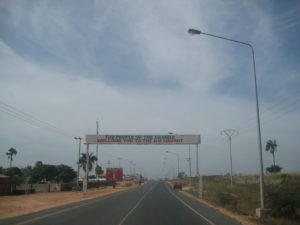
The Gambia River not only provides important internal transport but is also an international commercial link. Oceangoing vessels can travel 240 km upstream. In 2004 there were 390 km of total waterways. Banjul, the principal port, receives about 300 ships annually. Ferries operate across the river and between Banjul and Barra.
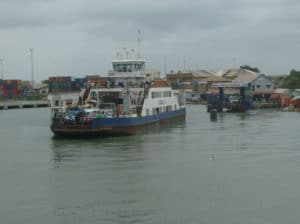
With the construction of major all-weather roads on both sides of the Gambia River, the waterway has become less significant for passenger traffic.
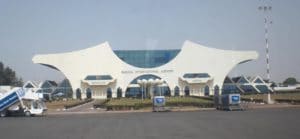
The country’s only international airport is at Yundum, 26 km from Banjul. Air Gambia, 60% state owned, acts as an agent only. Foreign air carriers provide international service.
Flag of the Gambia:
The national flag of the Gambia consists of three horizontal red, blue and green bands separated by two thin white fimbriations. Adopted in 1965 to replace the British Blue Ensign defaced with the arms of the Gambia Colony and Protectorate, it has been the flag of the Republic of the Gambia since the country gained independence that year. It remained unchanged throughout the Gambia’s seven-year confederation with Senegal.
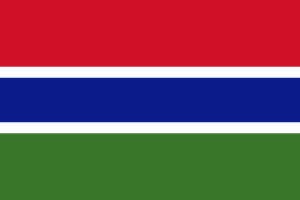
The British first arrived in what is now modern-day Gambia in 1661, when they conquered James Island. They proceeded to construct forts around the confluence of the Gambia River with the Atlantic Ocean, and gradually expanded their control upstream. This area became a protectorate in the 1820s under the jurisdiction of Sierra Leone, and eventually emerged as a separate crown colony of the United Kingdom within its colonial empire in 1888. This newfound status gave the Gambia its own “distinctive” colonial flag. This is because colonies were permitted to utilize the British Blue Ensign and deface it with the arms of the territory under the Colonial Naval Defence Act 1865. The arms of the Gambia at the time consisted of a circle depicting an elephant, a palm tree and hills, along with the letter “G” standing for the first letter of the territory’s name.
